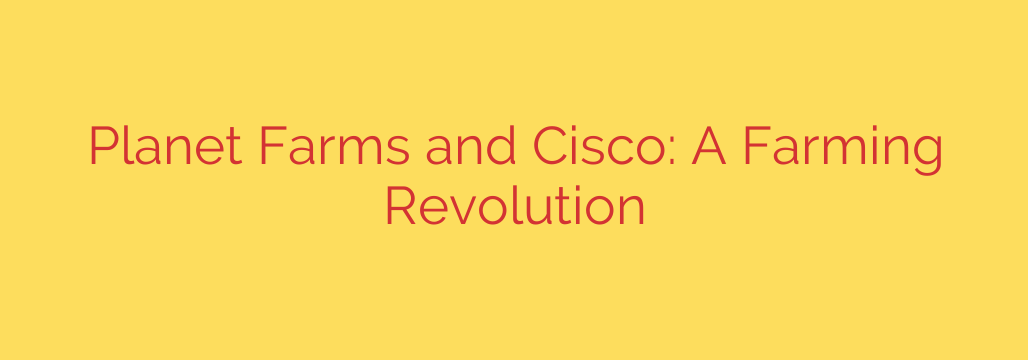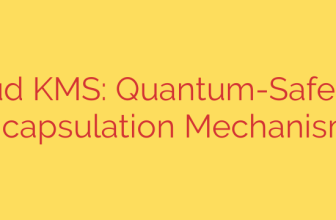
The High-Tech Harvest: How Vertical Farming is Revolutionizing Our Food Supply
The global food system is facing unprecedented challenges. From shrinking arable land and water scarcity to complex supply chains and the heavy use of pesticides, traditional agriculture is under immense pressure. However, a technological revolution is quietly taking root in massive, climate-controlled buildings, promising a more sustainable, efficient, and resilient way to feed our communities. This is the world of vertical farming, where agriculture meets advanced technology.
At its core, vertical farming is a method of growing crops in vertically stacked layers, often within controlled indoor environments. Instead of sprawling fields under the sun, imagine a multi-story farm where every variable—from light and water to humidity and nutrients—is precisely managed. This approach, known as Controlled Environment Agriculture (CEA), allows for the cultivation of high-quality produce year-round, regardless of external weather conditions.
The Digital Nervous System of the Modern Farm
What makes this agricultural evolution possible is a sophisticated fusion of technology and biology. The foundation of a successful vertical farm is not soil, but data. These facilities are powered by a robust digital infrastructure that acts as a central nervous system, connecting thousands of sensors, cameras, and automated systems.
This intricate network constantly monitors and manages the growing environment with incredible precision:
- Real-Time Data Collection: Thousands of IoT (Internet of Things) sensors gather data on everything from air temperature and CO2 levels to the specific nutrient concentration in the water.
- AI-Powered Optimization: This data is analyzed by artificial intelligence and machine learning algorithms to create the perfect “recipe” for each plant. The system learns and adapts, continuously optimizing conditions to enhance flavor, texture, and nutritional value.
- Full Automation: Based on the data analysis, the system automatically adjusts LED lighting to mimic the perfect sunrise, delivers precise amounts of water and nutrients through closed-loop irrigation, and maintains a sterile environment to eliminate the need for pesticides.
By creating a perfect, predictable environment, these high-tech farms can produce crops with unparalleled consistency and quality, all while operating with extreme efficiency.
Key Benefits of a Tech-Driven Approach to Agriculture
The advantages of this technology-driven farming model extend far beyond simple crop production. They represent a fundamental shift toward a more sustainable and secure food future.
- Dramatic Sustainability Gains: Vertical farms use resources with remarkable efficiency. They consume up to 95% less water and 90% less land compared to conventional farming methods. Because the water is recycled within a closed-loop system, runoff and waste are virtually eliminated.
- Fresher, Safer, and Local Produce: By locating farms near urban centers, the time and distance from harvest to table are drastically reduced. This minimizes transportation emissions, reduces food waste, and ensures consumers receive fresher, more nutritious produce. Furthermore, the sterile, controlled environment means crops are grown completely free of pesticides and herbicides.
- A Resilient and Reliable Food Chain: Vertical farming is immune to droughts, floods, and seasonal changes. This allows for consistent, year-round production, creating a more stable and reliable supply chain that is not vulnerable to climate volatility.
Securing the Future of Food: The Importance of Cybersecurity
As farms become smarter and more connected, they also become potential targets for cyber threats. The same operational technology (OT) that manages irrigation and lighting can be vulnerable if not properly secured. A cyberattack on a vertical farm could be catastrophic, leading to the loss of entire crops, theft of proprietary growing data, or a complete shutdown of operations.
Protecting these advanced agricultural systems is critical. Best practices include:
- Network Segmentation: Keeping the IT networks (email, administration) separate from the sensitive OT networks that control the physical farming equipment.
- Robust Access Control: Implementing strict controls to ensure only authorized personnel can access and modify critical systems.
- Continuous Monitoring: Actively monitoring network traffic for unusual activity or potential threats to detect and respond to incidents quickly.
By integrating robust cybersecurity measures from the ground up, the agricultural industry can safely embrace this technological transformation. The farm of the future is not just about growing plants—it’s about cultivating a secure, sustainable, and intelligent system that can nourish generations to come.
Source: https://feedpress.me/link/23532/17175920/revolutionizing-farming-planet-farms-and-cisco-industrial-networks








